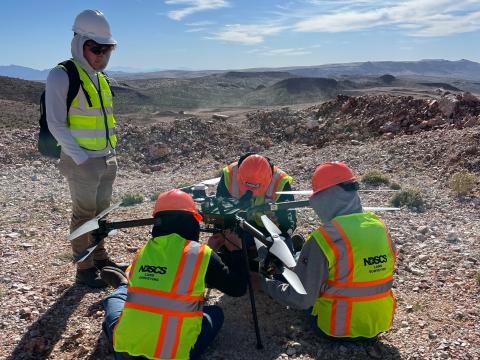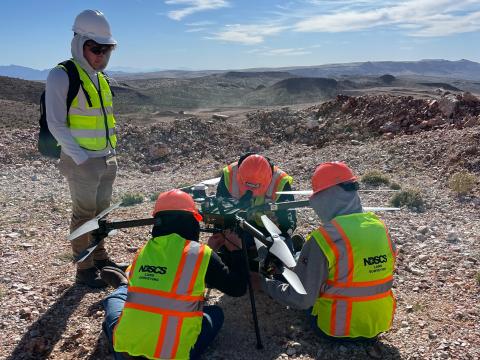The Business and Marketing emphasis area will provide students with knowledge on business and marketing practices along with communication and presentation skills.
- Type: A.A.S. degree (Unmanned Aircraft Systems degree sub-plan)
- Location: Wahpeton
- Cluster: Architecture and Construction
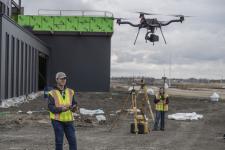 The Civil Engineering Technology Emphasis will prepare students for work as civil technicians in construction related industries with the ability to utilize drone technology.
The Civil Engineering Technology Emphasis will prepare students for work as civil technicians in construction related industries with the ability to utilize drone technology.
- Type: A.A.S. degree (Unmanned Aircraft Systems degree sub-plan)
- Location: Wahpeton
- Cluster: Architecture and Construction
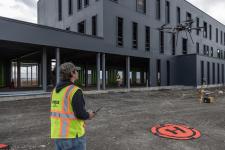 The Construction Inspection emphasis area will provide students with knowledge of construction practices, construction specifications, print reading, construction document management, material testing, and quality control practice.
The Construction Inspection emphasis area will provide students with knowledge of construction practices, construction specifications, print reading, construction document management, material testing, and quality control practice.
- Type: A.A.S. degree (Unmanned Aircraft Systems degree sub-plan)
- Location: Wahpeton
- Cluster: Architecture and Construction
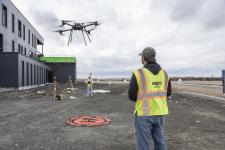 The Land Surveying Emphasis will prepare students for work as surveying technicians in construction related industries with the ability to utilize drone technology.
The Land Surveying Emphasis will prepare students for work as surveying technicians in construction related industries with the ability to utilize drone technology.
- Type: A.A.S. degree (Unmanned Aircraft Systems degree sub-plan)
- Location: Wahpeton
- Cluster: Architecture and Construction
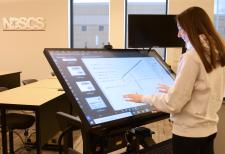 With the Architectural Modeling Emphasis, in addition to the UAS courses, students will take multiple modeling courses using Autodesk Revit software. Construction methods and materials and print reading courses will also be included in the program for students to have a good knowledge of construction and ability to read prints.
With the Architectural Modeling Emphasis, in addition to the UAS courses, students will take multiple modeling courses using Autodesk Revit software. Construction methods and materials and print reading courses will also be included in the program for students to have a good knowledge of construction and ability to read prints.
- Type: A.A.S. degree (Unmanned Aircraft Systems degree sub-plan)
- Location: Wahpeton
- Cluster: Architecture and Construction
The Transfer Emphasis will provide students with a strong knowledge and skills for various applications of drone technology and compliment them with general education courses suited for transferring to a university for drone related studies.
- Type: A.A.S. degree (Unmanned Aircraft Systems degree sub-plan)
- Location: Wahpeton
- Cluster: Architecture and Construction
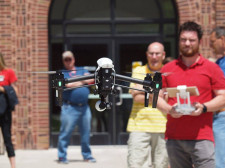
The Unmanned Aircraft Systems (UAS) certificate program is designed to provide a broad understanding of the use of UAS in a commercial environment.
- Type: Certificate
- Locations: Wahpeton
- Cluster: Architecture and Construction
Add this Certificate to an Associate’s Degree you are currently pursuing and you will be an important asset for your future employer as a Remote Pilot.
With any of the UAS program options students will learn how to fly, collect and process data through hands-on learning in these areas:
- Photogrammetry
- Thermography
- Multi-spectral Imaging
- LiDAR
- Photography
- Videography
Students will also learn how to process 3D models, 3D surfaces, calculate surface volumes, analyze thermal images, analyze vegetation with NDVI mapping, use LiDAR data, edit photos and create video productions using:
- Pix4D Imaging Software
- ESRI ArcGIS
- Autodesk Civil 3D
- Autodesk Recap
- Autodesk Infraworks
- Adobe Lightroom
- Adobe Photoshop
- Adobe Premiere Pro
- Adobe After Effects



